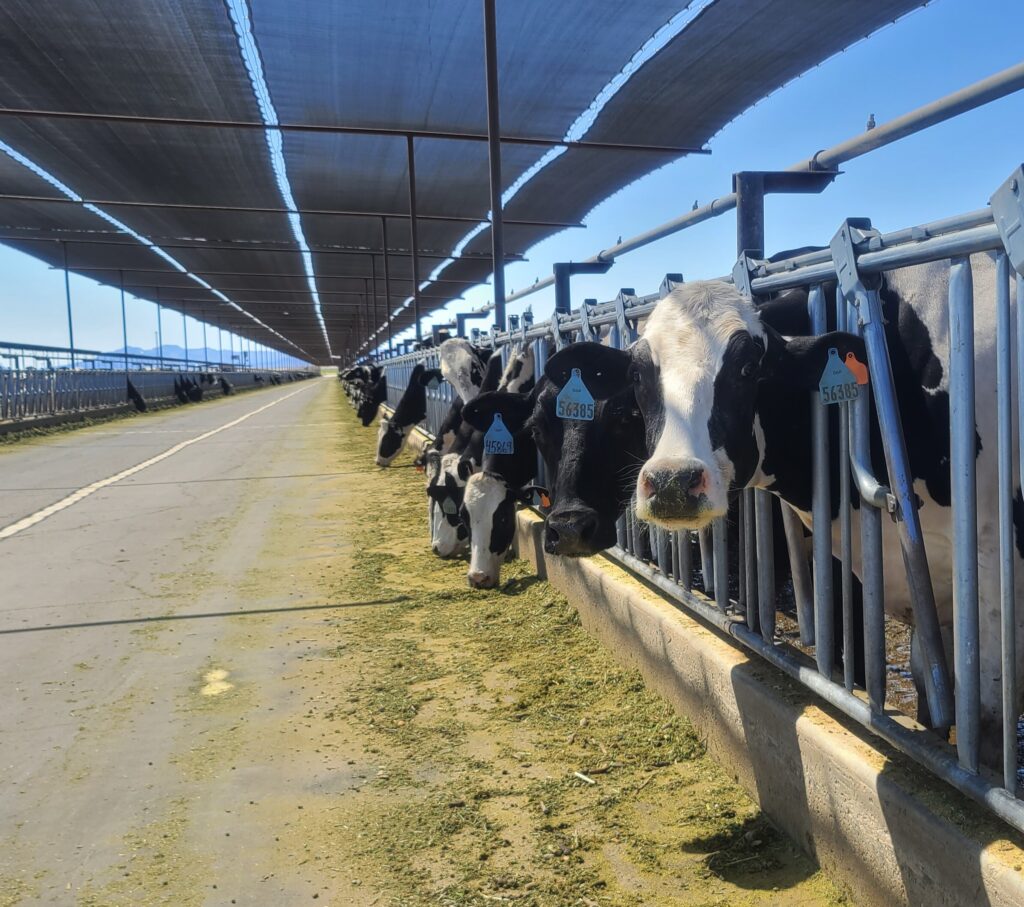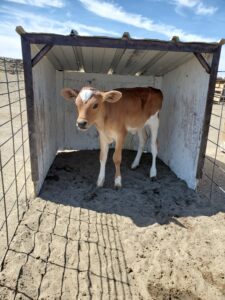In honor of Earth day, we’re taking a closer look at the environmental impact of dairy, how dairy farmers work to reduce the impact of their carbon footprint, and how dairy farmers plan to shape the future of the world ahead.
Keeping Food Out of Landfills
Each year, 66 billion pounds of food goes to waste globally, and about 40 percent of all food in the United States, gets wasted. Throwing food away means it will eventually end up in a landfill and rot. Food waste in landfills threatens the environment as rotting food produces methane, a potent greenhouse gas.
Luckily for us, dairy cows keep food out of landfills by eating foods that humans can’t digest and would otherwise go to waste. Cow’s ruminant digestive systems allow them to eat foods like almond hulls, cottonseed, and distiller grains, as well as fruit and vegetable tops, stalks and scraps. Nationwide, cows’ diets make up 32 to 41 million metric tons of byproducts from crop or food company production each year. These bovines are doing some serious work when it comes to tackling food waste!
Staying Current with the Water Shortage
It’s no secret that cows need significant water to produce milk and maintain their health. Everyday dairy cows drink approximately 30-50 gallons of water. On the farm, water serves many purposes, so finding opportunities to reclaim and reuse water is imperative. Water is used to keep cows hydrated on the farm, cool and mist the cows, clean barns, cool milk temperatures, clean the milk parlor, and eventually return it to the land for crop irrigation. Farmers reclaim and reuse water at least 3-4 times on the farm in Nevada.
By implementing sustainable practices into farming methods, dairy farmers have considerably improved the reduction of their water use. In 2017, dairy farmers reduced the amount of water needed to produce a gallon of milk by 30% from 2007. If we can accomplish a 30% decrease in water usage within a 10 year span, imagine what can be done in 50 years.
Working the Land
Farmers in Nevada grow their crops for multiple purposes on the farm, like supplying the local economy with resources, growing food for their cows, and creating a sustainable energy cycle. When it comes to growing, farmers practice crop rotation to increase the amount of carbon in the soil which adds to soil fertility and maximizes crop growth. Since plants absorb carbon dioxide from the atmosphere and release oxygen, growing crops helps to sequester carbon emissions on the farm. Additionally, cow manure is a great natural fertilizer and dairy farmers have a lot of it. The manure gets put out onto the crop fields, returning nutrients to the soil and reducing reliance on chemical fertilizers. This creates a more natural and sustainable energy cycle.
Sustainable Food Systems
Providing nutritious food to an expanding global population is in jeopardy for the foreseeable future. By 2050, approximately nine billion people will live on the planet; to accommodate this growing population, food production must increase by 60%.
Nevada has just over 25 farms with herd sizes ranging from 500 to 25,000 cows. For years, these dairy farms have provided our communities with delicious and nutritious food. On average, one dairy cow produces 7.5 gallons of milk per day. Meaning it would take 75,000 dairy cows to supply Nevadans with three cups of dairy daily, fortunately we already have the resources to do this.
Not only is dairy a resource that can feed the masses, but it’s also incredibly nutritious. Milk is one of the most nutrient-dense beverages, with 13 essential nutrients and 8g of protein. It’s also a healthy source of carbohydrates and consists of 85% water, making milk nutritious and hydrating.
Nurturing Nature for a Better Future
In today’s world, preserving our planet has become an urgent matter like never before. As stewards of the land, dairy farmers have always searched for innovative methods to preserve the land, recycle what they can, reduce waste, and find smart solutions to keep up with the demands of the population. Dairy farmers are actively attempting to achieve greenhouse gas neutrality, continue to find ways to optimize water use while maximizing recycling efforts, and improve water quality overall. There is still much work to be done, but as farmers who’ve only advanced their methods with the world’s changes, the future’s looking bright.



